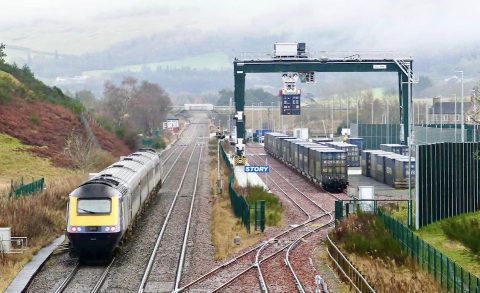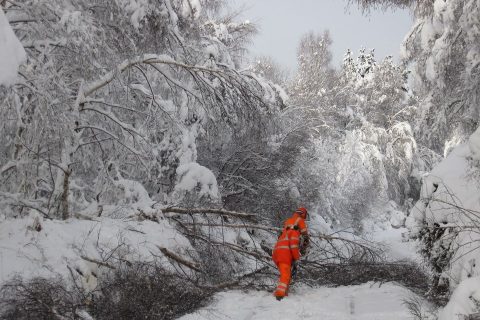
Scotland commits to rail with 4.2 billion pound investment programme
The latest plan for Scotland’s Railway, published in collaboration with Network Rail, is a bid to create a safer, greener, and more reliable railway. The ambitious 4.2 billion pound (4.9 billion euro) five-year plan sets out a comprehensive strategy for Control Period 7 (2024-2029), commonly known as CP7. The plan focuses on major investments in infrastructure renewal, climate change mitigation, technological advancements, improved train performance, and the growth of both freight and passenger services.
It is a complicated relationship between the Scottish government’s devolved responsibility for transport matters and the UK-wide nature of the railway network, managed by Network Rail, which is a UK government agency. So, back in February of this year, the Scottish Government published its High-Level Output Statement (HLOS) and Statement of Funds Available (SoFA), outlining the objectives for Scotland’s Railway and the available funding to achieve them. In answer to those documents, Network Rail, working with Scotland’s Railway management, has come up with a plan for funding and running the railway for Control Period 7. If that’s not complicated enough, the UK Office of Rail and Road has still to run the rule over the plans, and by the time Network Rail engineers sign on for the first shift of CP7 – they may well be working for Great British Railways.
Britain’s first 24/7 weather desk
Aside from all the sign-offs and hand-overs, the plan concentrates on a commitment to resilience. The plan aims to strengthen the network to withstand extreme weather conditions while ensuring timely and efficient train operations. The ageing Scottish rail infrastructure is in need of constant attention – made no more so apparent than in the landslip at Carmont which caused a fatal accident in 2020. According to Network Rail, the overarching goal is to deliver value for taxpayers while prioritising safety, reliability, and performance. The settlement does not cover enhancements to the railway, such as the development of the short Levenmouth Line in Fife. The plan, say NR, remains dedicated to contributing to the Scottish Government’s net-zero ambitions and fostering a greener rail system.

Key components of the plan include a customer-centric approach, focusing on punctuality, reliability, and an improved passenger and freight experience. “To enhance safety and reliability, technology and innovation will be leveraged, featuring Britain’s first 24/7 weather desk, new visualisation tools, and remote condition monitoring to identify issues proactively”, says NR. “Over 1.9 billion (2.2 billion euro) will be invested in renewals to further bolster safety and reliability.”
Ambitious freight targets in the plan
“The Railway Industry Association and our members in Scotland greatly welcome the publication of the Strategic Business Plan”, said Meirion Thomas, who chairs the RIA in Scotland Chair, the body representing the supply chain for the sector. “The new plan comes at an important point for rail suppliers when freight and passenger numbers, and revenues, continue to head in the right direction post-pandemic.”
Liam Sumpter, Network Rail Scotland’s Route Director, expressed delight in the Scottish Government’s support for the railway. He asserted that over the next five years, NR would diligently work towards providing a safe, greener, and more reliable railway for Scotland. “We’re committed to delivering a railway that people can rely on and supports the social and economic growth of the nation”, he said.
Additionally, Scotland’s Railway aims to contribute to economic growth and connectivity. Already on the table there is an ambitious target of 8.7 per cent annual growth in rail freight. That’s in line with the Scottish government’s policy of reducing road congestion and emissions. All this needs the seal of approval from The Office of Rail and Road, a UK government appointed independent oversight body. The ORR is set to deliver its final determination on Network Rail’s delivery and funding for CP7 by October 31, 2023. This assessment ensures that the plan aligns with the overall UK railway objectives.



